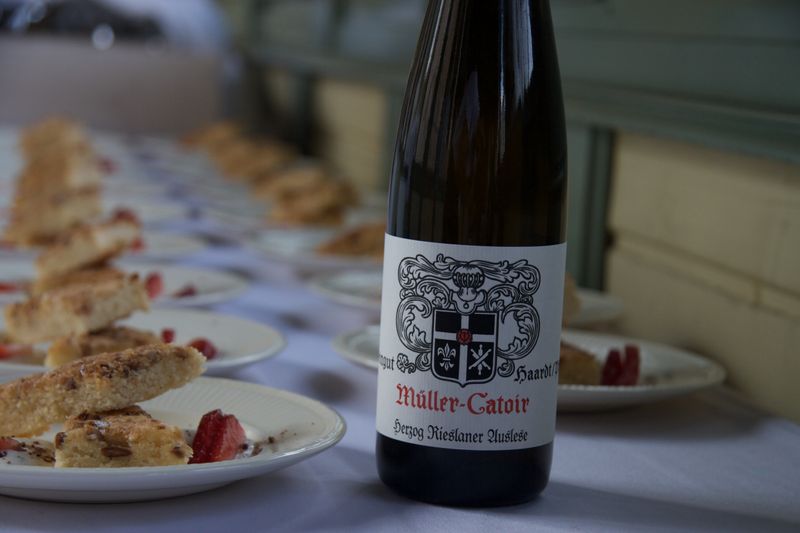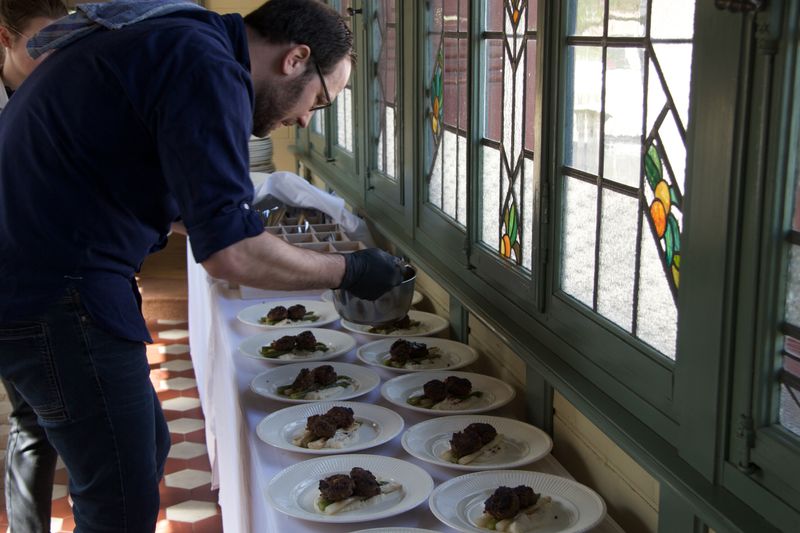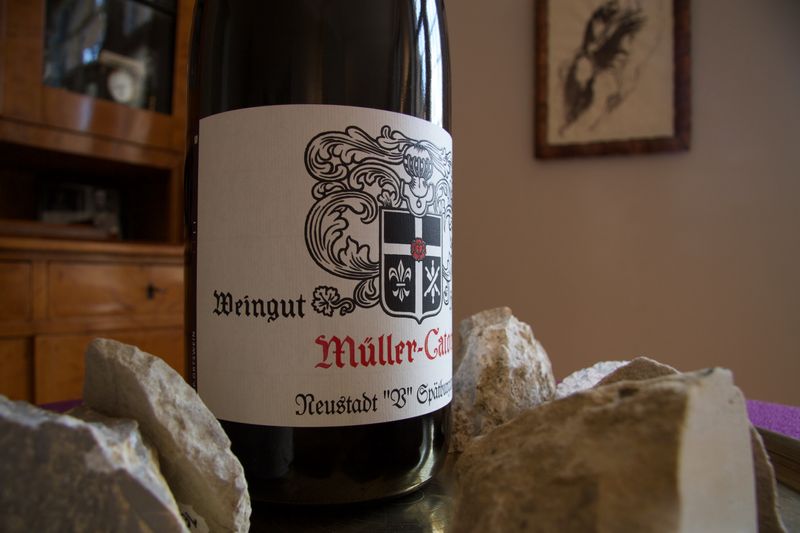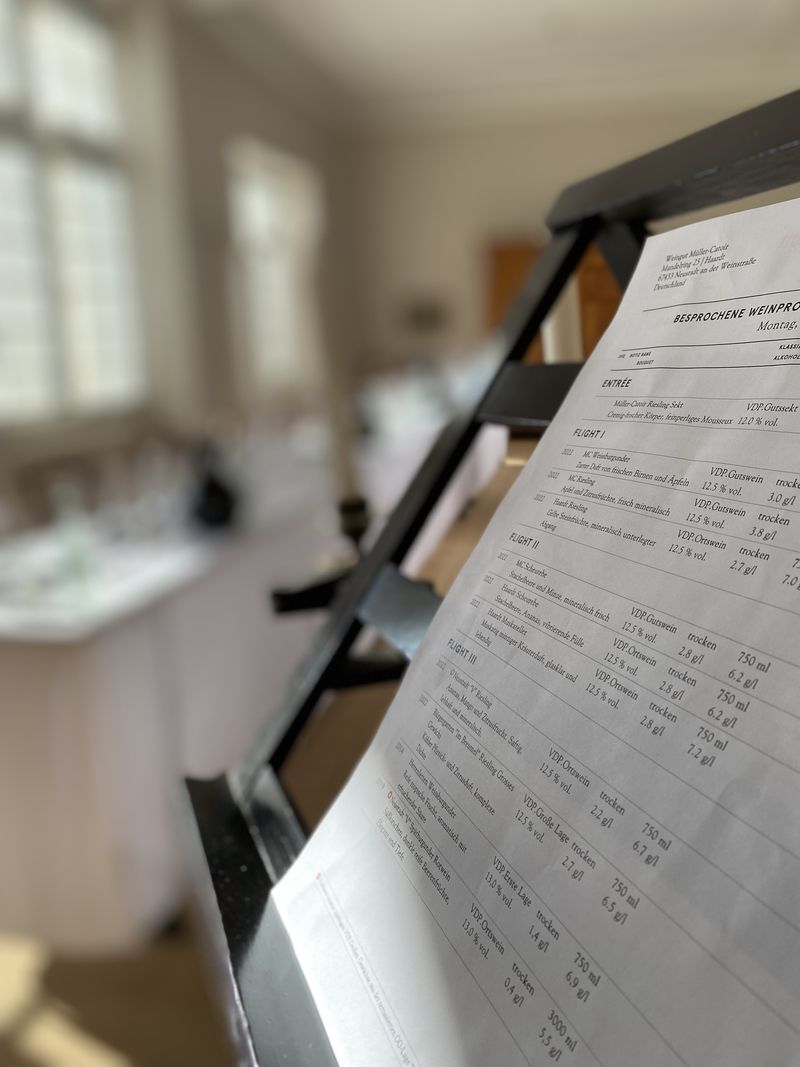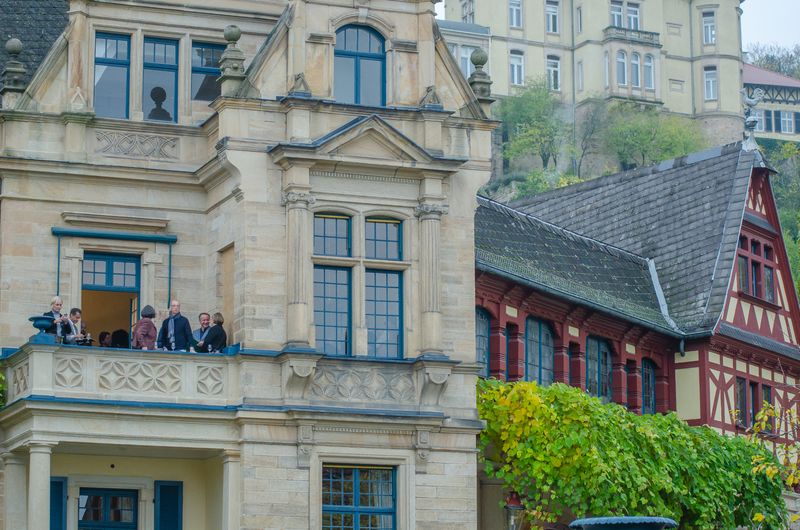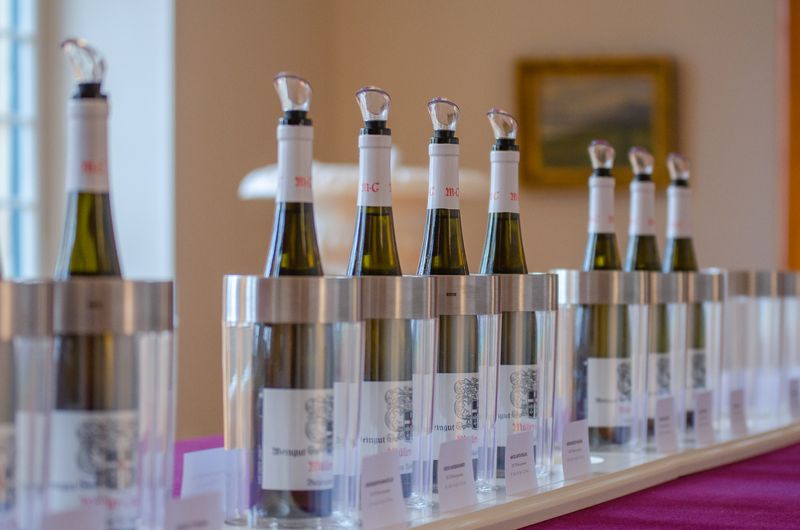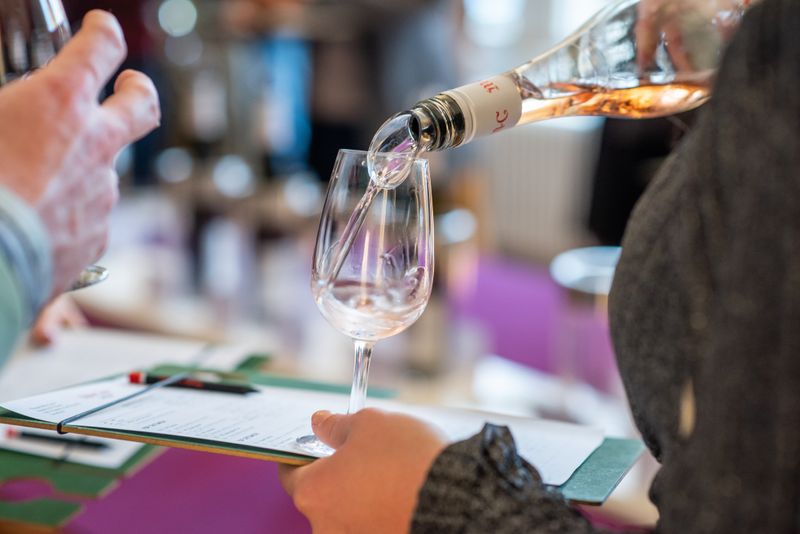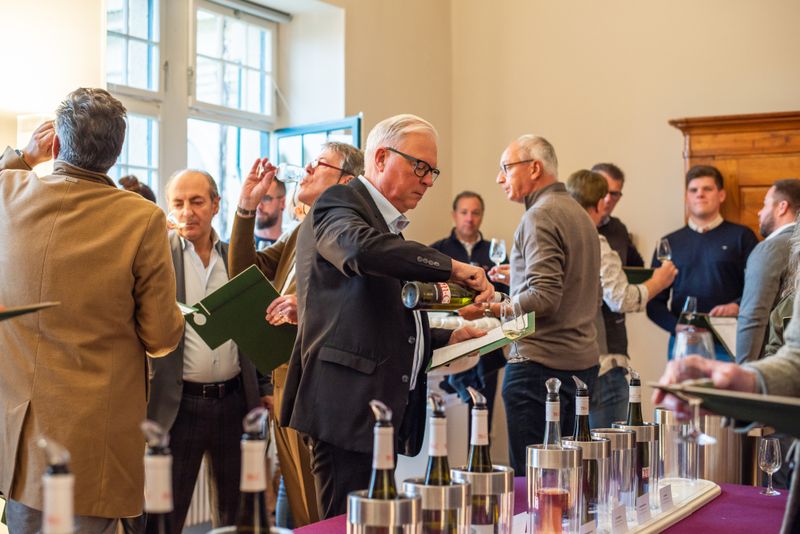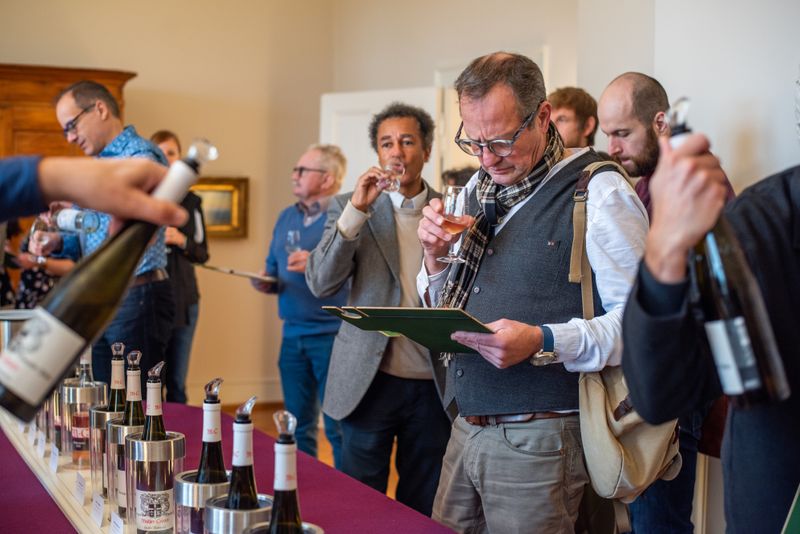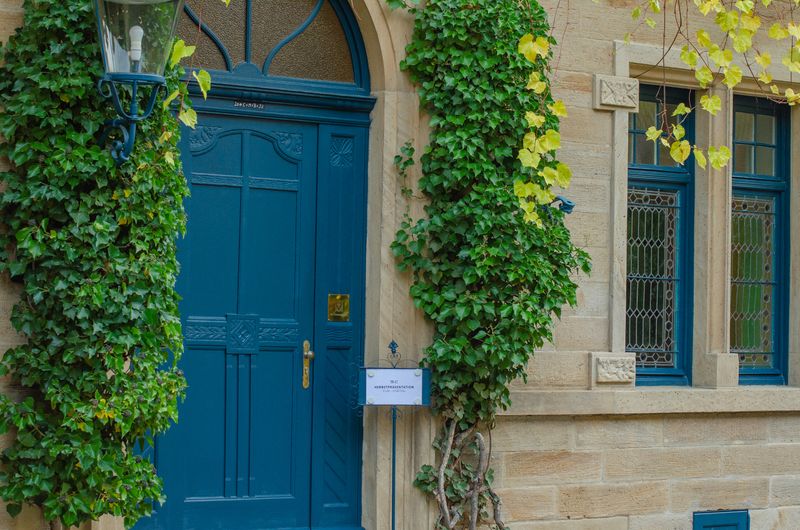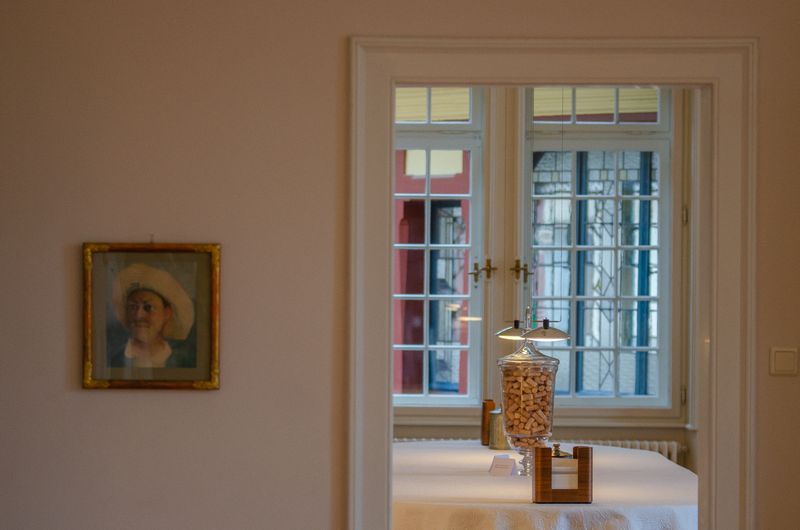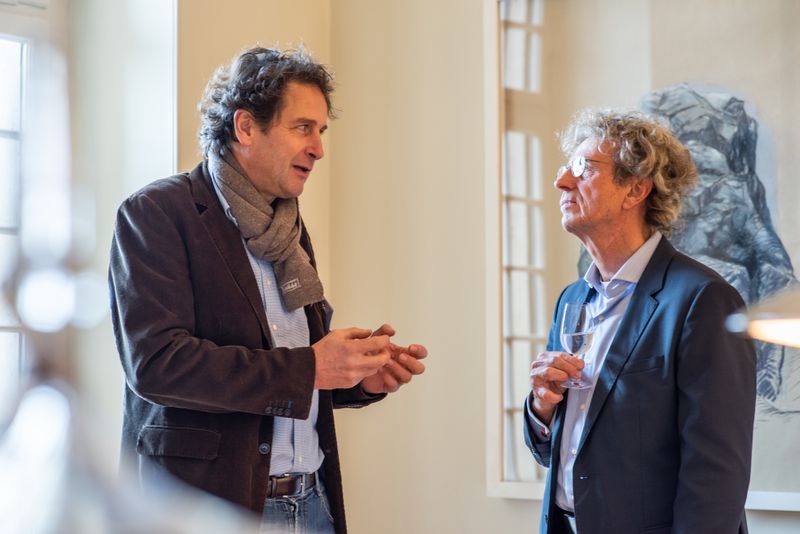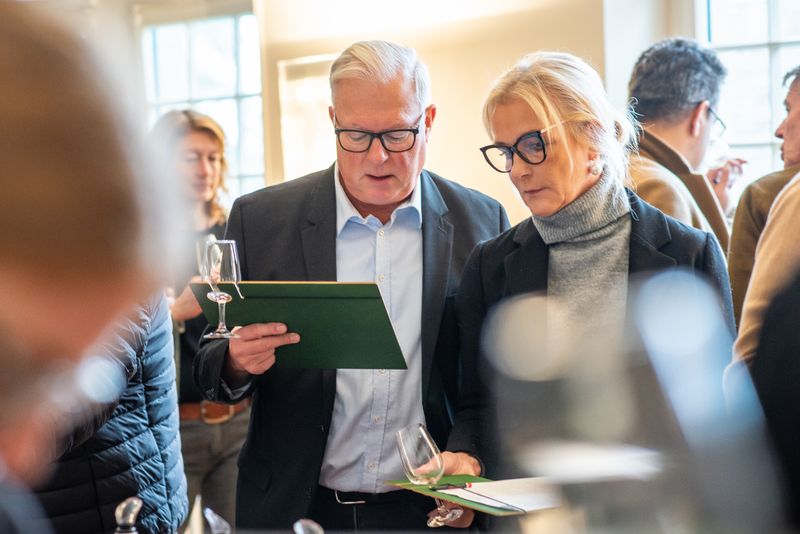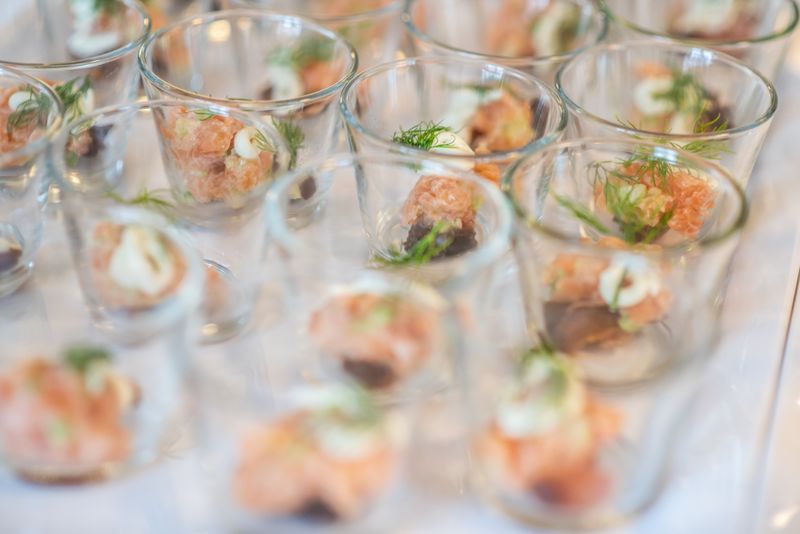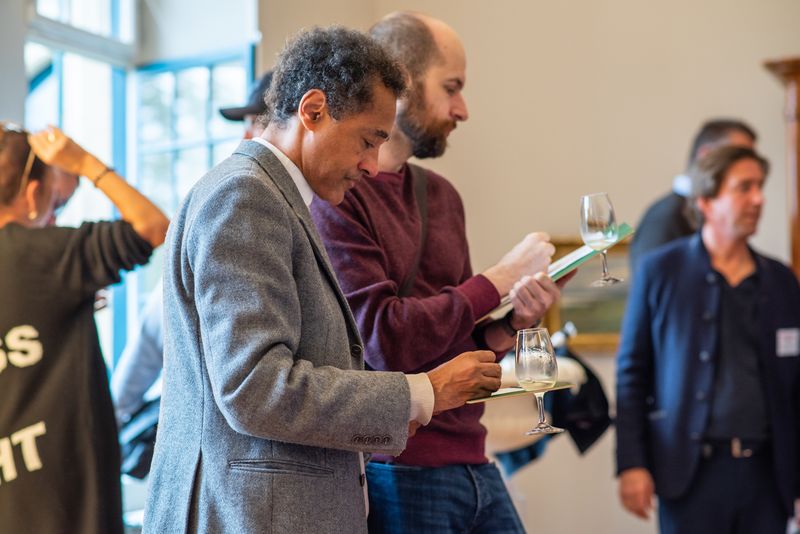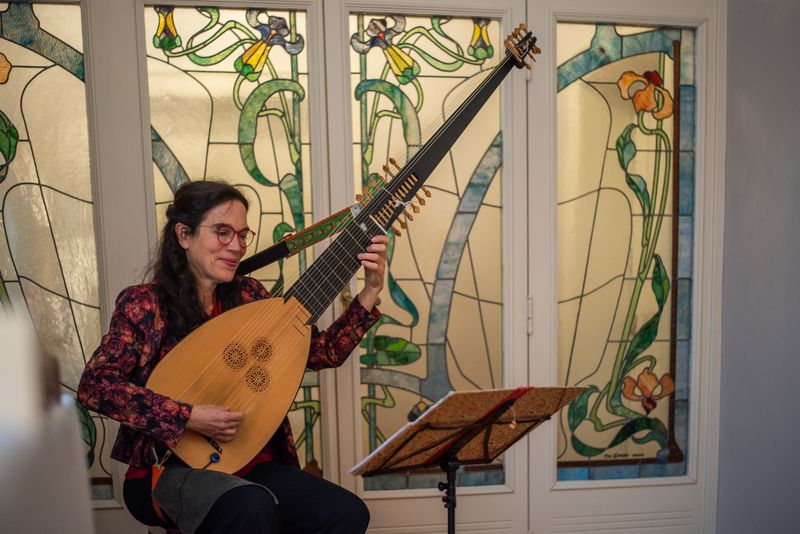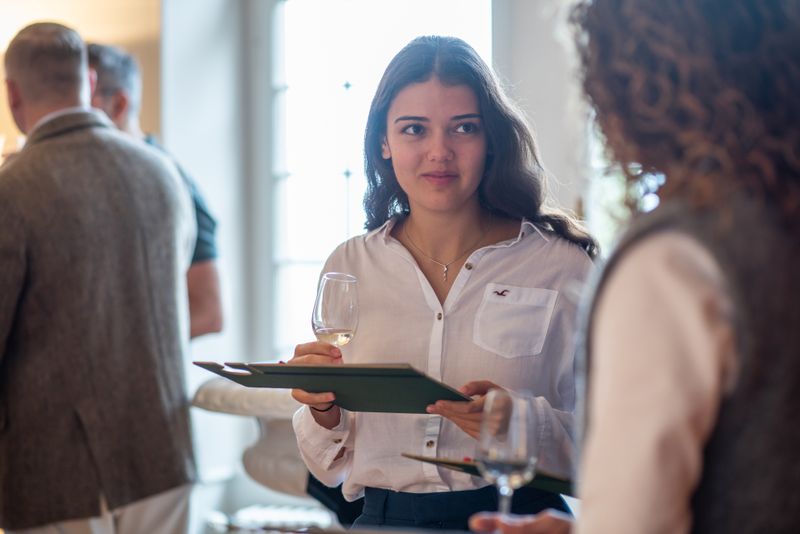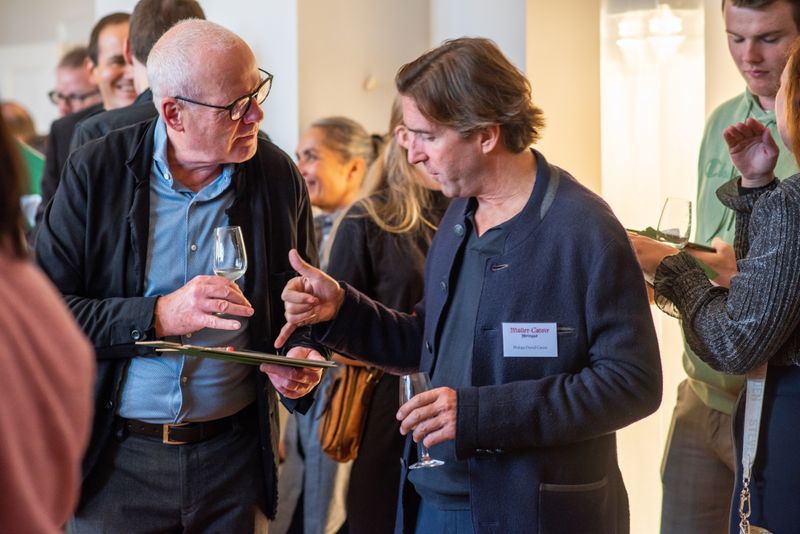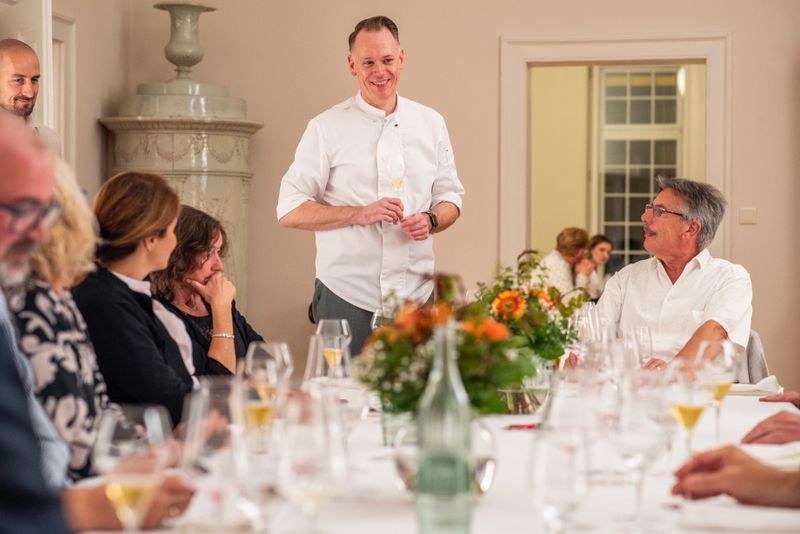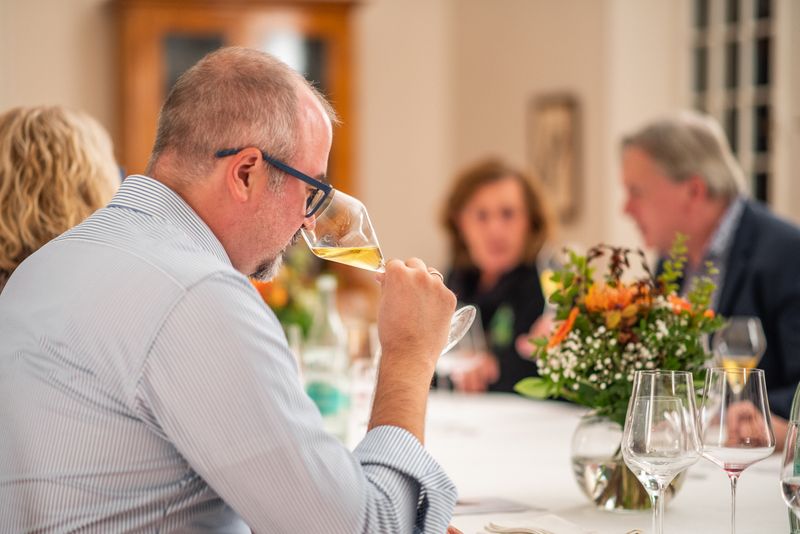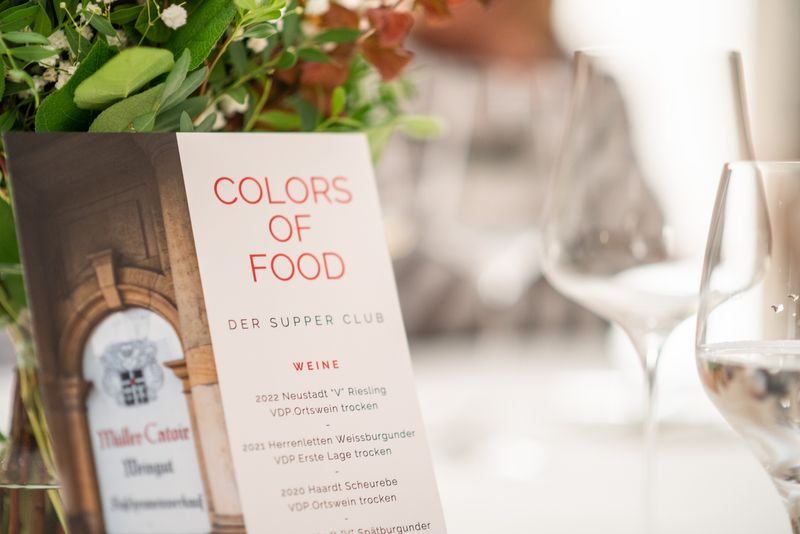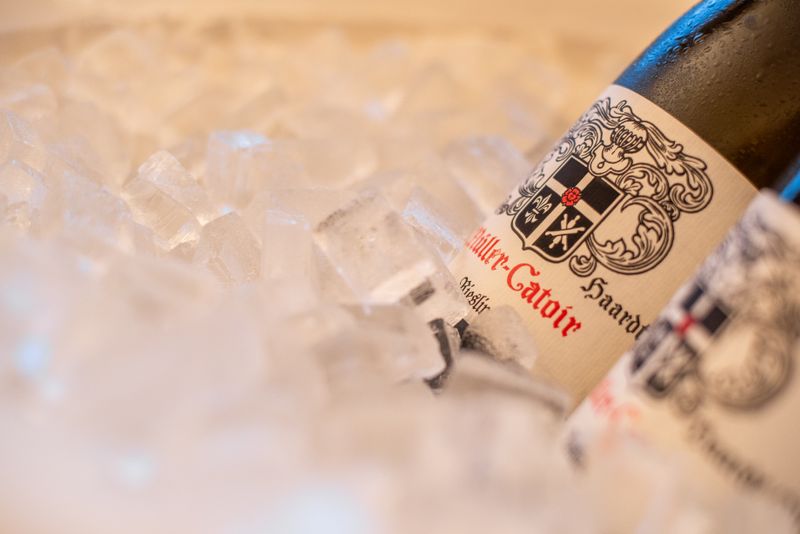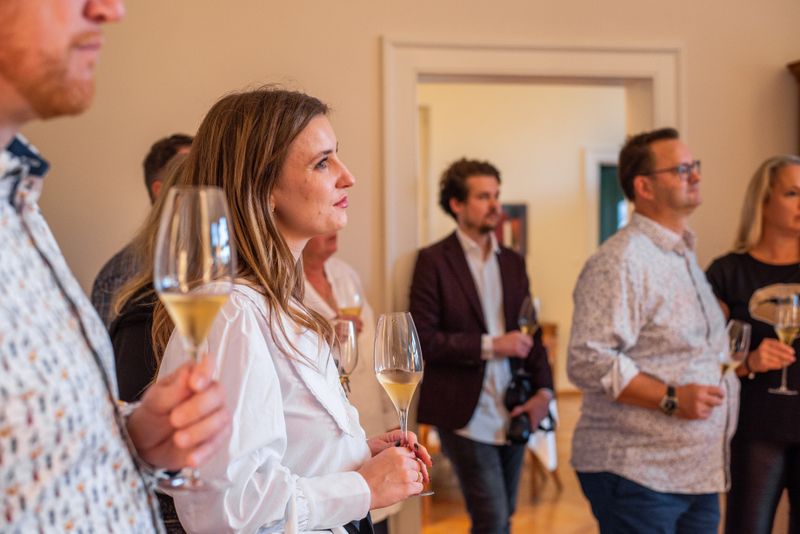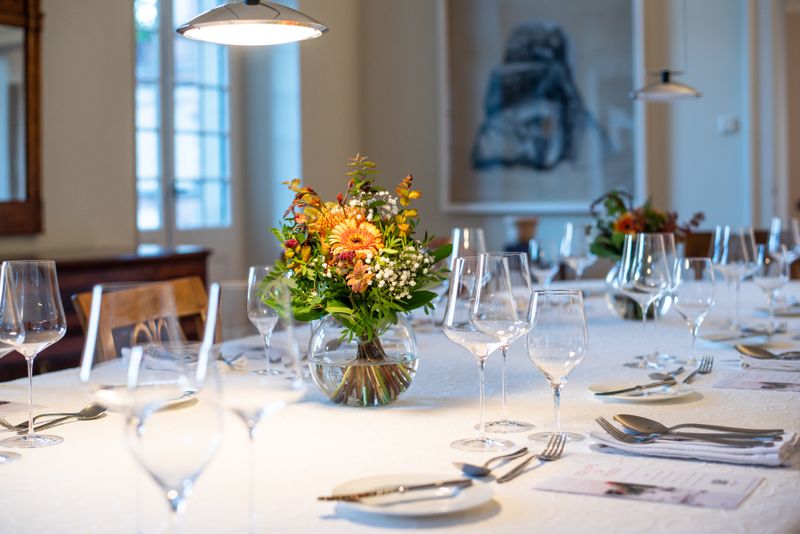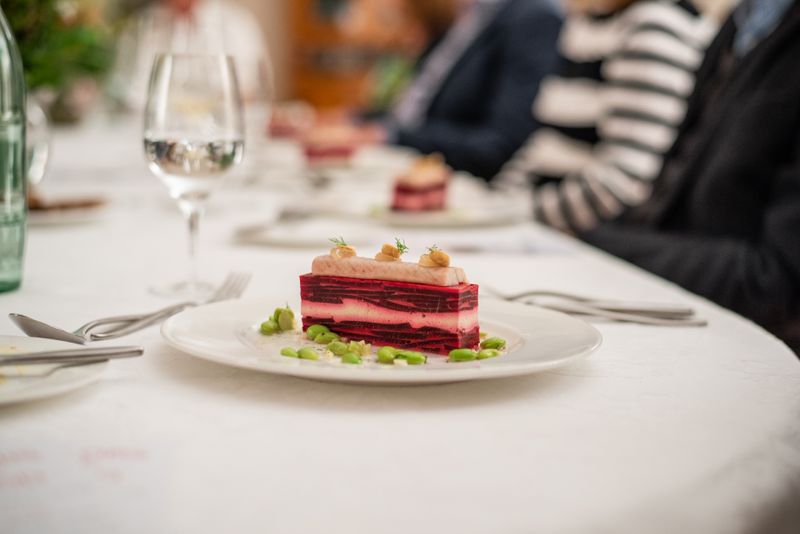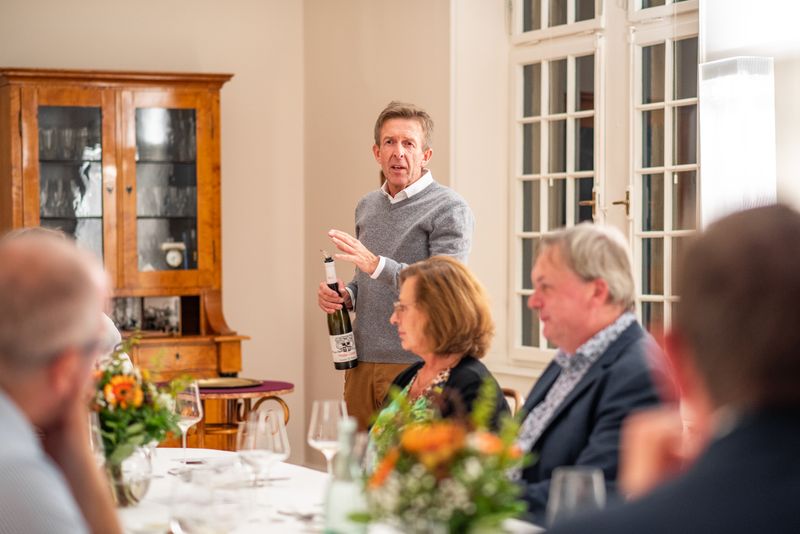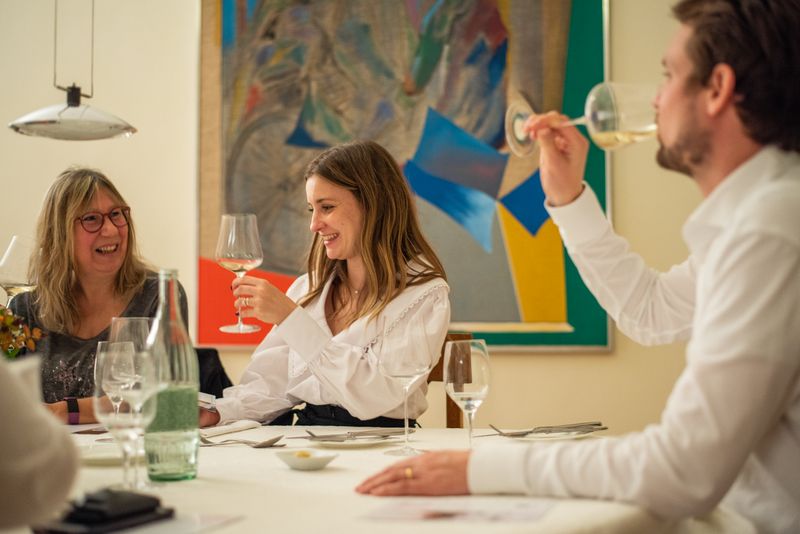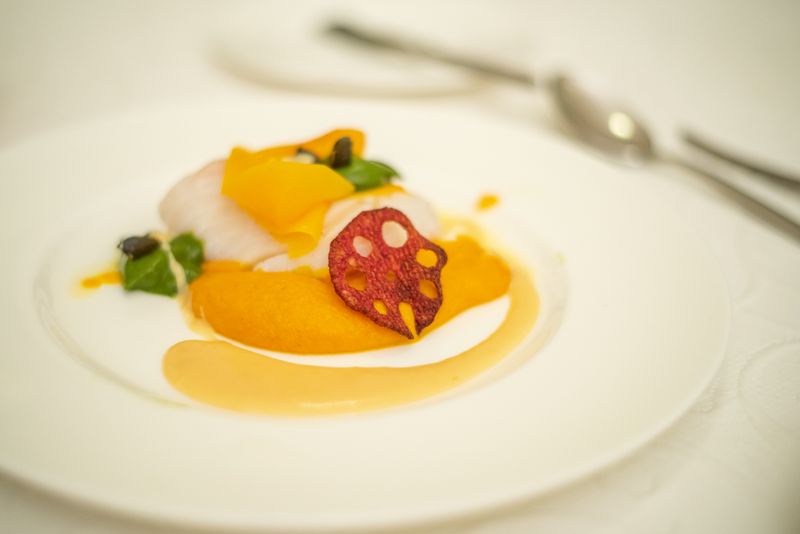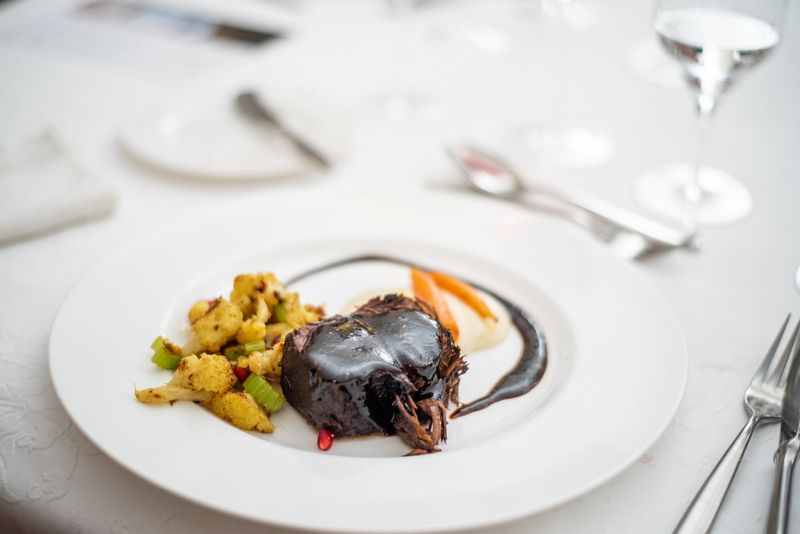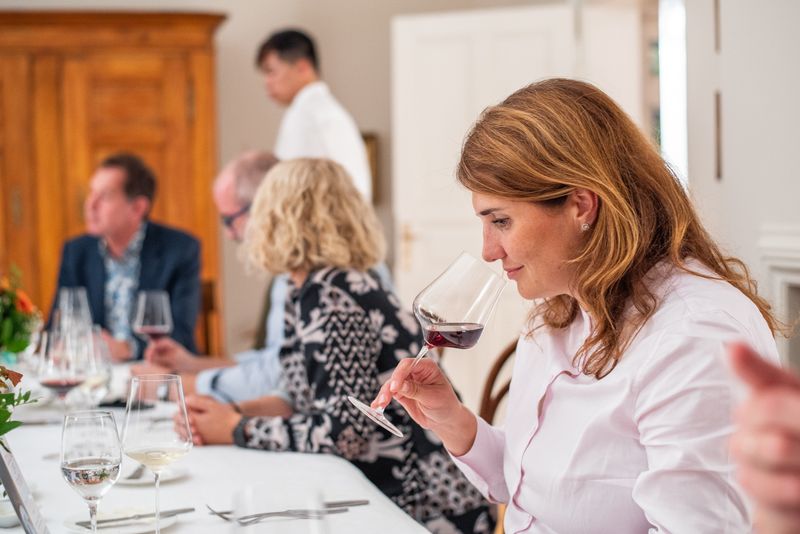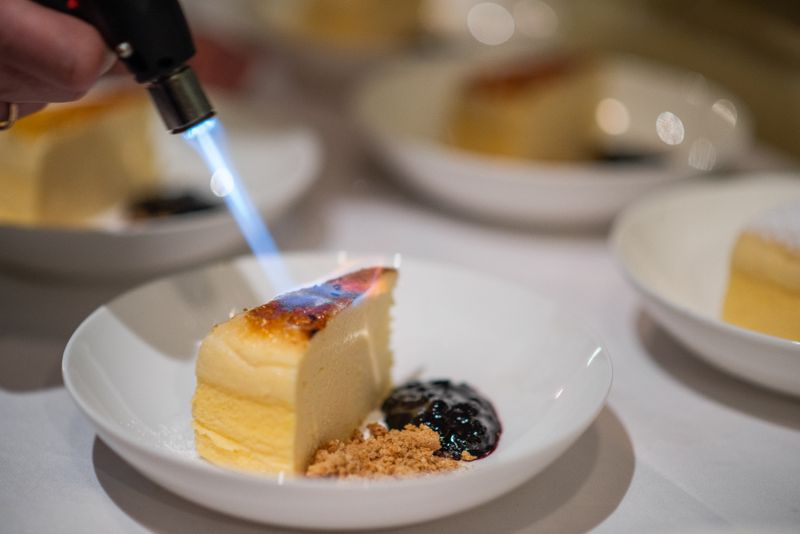Herzog Rieslaner Trockenbeerenauslese | 2023 VDP.Erste Lage noble sweet
100/100 | "Gigantic nose of dried mangoes with porcini mushroom complexity. Off the scale concentration on the mouth-filling palate, but the supernaturally vibrant acidity make this a breathtaking wine. Totally brilliant finish that, in this embryonic phase of the wine’s development, is overwhelming, but that gives this TBA masterpiece titanic potential. Extremely limited production. From organically grown grapes. Drinkable now, but best from 2028."
Bürgergarten “Im Breumel” GG | 2023 VDP.Große Lage dry
99/100 | "The enveloping nose is a cornucopia of stone and citrus fruit of all colors, plus banana and Asian pear aromas. This is an elegant and filigreed masterpiece of Pfalz in the form of dry riesling. So concentrated yet so delicate and precise on the medium-bodied palate, this is a joy to behold. And then comes the incredibly long, stony finish that sings as very few dry white wines in the world do. From organically grown grapes. Drink from release."
Herzog Weißburgunder | 2023 VDP.Erste Lage dry
98/100 | "If this is dry pinot blanc decadence, then give me more. Extravagant nose that spans the range from mandarin oranges to white flowers, underlined with delicate leesy complexity. Breathtaking interplay of creaminess and mineral freshness, the former dominant at the front of the medium- to full-bodied palate, the latter taking control at the breathtaking finish. The finish doesn’t want to stop. Fermented and matured on the lees in 500-liter oak casks. From organically grown grapes. Drink or hold."
Bürgergarten Riesling | 2023 VDP.Erste Lage dry
97/100 | "So rich and so elegant, who could resist this fabulously beautiful dry riesling? Stunning aromas of apricots, orange blossoms, mini bananas and tropical flowers emerge as the wine aerates. Underplayed concentration and power, the finish so filigreed and precise, yet also stony and zesty. You could study all these details for hours. Spot-on balance, too. From organically grown grapes. Drink or hold."
Herrenletten Weißburgunder | 2023 VDP.Erste Lage dry
97/100 | "What a fabulous interplay of fine toasty oak and caramelized pear character this great dry pinot blanc has. Also a delicate flinty note. Terrific concentration and every bit as much elegance on the medium-bodied palate. The wines from this grape variety are seldom as filigreed and precise as this is in the very long, delightfully pointed finish. Fermented and matured on the lees in 500-liter oak casks. From organically grown grapes. Drink or hold."
Mandelring Scheurebe | 2023 VDP.Erste Lage dry
97/100 | "Anyone who wonders why they should pay attention to an unusual German grape variety called scheurebe gets to find how out how amazing these wines can be. All the colors of currant fruit, plus melons, mangosteens and passion fruit overlain by a wonderfully delicate, minty freshness. So concentrated, vibrant and focused on the medium-bodied palate. Great wet stone freshness at the super-long finish. From vines planted in 1965. From organically grown grapes. Drink or hold."
Bürgergarten Riesling Spätlese | 2023 VDP.Erste Lage off-dry
97/100 | "Brimming with delicate orange blossom, mandarin orange and nectarine aromas, this is a fabulously fresh and precise riesling Spatlese that barely tastes sweet. Instead it is enormously refreshing and precise on the barely medium-bodied palate. Simultaneously delightful and deep right through the extremely long finish. From organically grown grapes. Drink or hold."
Vogelsang Spätburgunder GG | 2022 VDP.Große Lage dry
96/100 | What a complex pinot noir. The interplay of forest floor and forest berry character with the fine toasty oak is a joy to experience. Concentrated and beautifully balanced palate, where the fine, compact tannins move so elegantly over the medium-bodied palate. Fantastic vitality and finesse in the finish. From vines ranging between 35 and 40 years old. From organically grown grapes. Drink from release.
Herrenletten Riesling | 2023 VDP.Erste Lage dry
96/100 | "This is incredibly cool and delicate in spite of its ample power and concentration. I love the nose of white flowers after a summer storm with European and Asian pear aromas. Then comes a wonderful yellow grapefruit zestiness that both lifts and drives the very long, compact finish. From organically grown grapes. Drink or hold."
Neustadt “V” Riesling | 2023 VDP.Große Lage dry
95/100 | "On the nose this is still a bit reserved, the long maturation on the lees quite obvious, but on the palate this is a beauty and a joy. As it aerates in the glass a wide spectrum of stone fruit, citrus and Asian pear aromas emerges. Great concentration and elegance on the finely nuanced, medium-bodied palate. Fantastic chalky power in the long, driving yet polished finish. From the terraced, high-altitude Vogelsang vineyard that’s a potential GG site. From organically grown grapes. Drinkable now, but best from 2025."
Gimmeldingen Riesling Kabinett | 2023 VDP.Ortswein off-dry
95/100 | "This may only be a riesling Kabinett, but it is a captivating wine with a stunning combination of grapefruit freshness and floral delicacy. Barely off-dry on the light-bodied and light-footed palate. Fabulous interplay of zesty fruit and vibrant acidity. Very long, super-clean finish. From organically grown grapes. Drink or hold."
Haardt Muskateller | 2023 VDP.Ortswein dry
95/100 | "A fantastic dry muscat that has none of the cliche aromas for this grape variety. Wonderful aromas of orange blossoms, mandarin oranges, persimmons and grapefruit (including the pith). Concentrated and refined with a super-elegant acidity that drives the very long, bright and precise finish. From organically grown grapes. Drink or hold."
Herzog Spätburgunder | 2022 VDP.Erste Lage dry
94/100 | A generous German pinot noir with aromas at the dark end of the spectrum, including plenty of licorice and a touch of smoke. Fantastic balance of fine tannins, ripeness and a medium to full body. Long, quite compact finish that suggests this needs more time in the bottle to give its best. From organically grown grapes. Drinkable now, but best from 2025.
Haardt Riesling | 2023 VDP.Ortswein dry
94/100 | "Wonderful aromas of mandarin oranges, nectarines and honeysuckle pour from the glass of this simultaneously succulent and vibrant dry riesling. Terrific energy and stony freshness on the medium-bodied palate and through the very long, dynamic finish. Makes you feel glad to be alive. From organically grown grapes. Drink or hold."
Haardt Scheurebe | 2023 VDP.Ortswein dry
94/100 | "Once you’ve smelled the fabulous nose of white peaches and melon topped with fresh mint and basil, there’s no turning back. So dynamic on the barely medium-bodied palate that you forget what it was that you were supposed to do. Terrific vitality on the very long, dangerously refreshing finish. From organically grown grapes. Drink or hold."
Haardt Weißburgunder | 2023 VDP.Ortswein dry
94/100 | "I can’t remember ever tasting a dry pinot blanc with this kind of expressive citrusy intensity. Stacks of pomelo, grapefruit and bergamot, and behind all this is a deep well of crisp pear and delicate leesy complexity. Long and very structured finish that has a riesling-like minerality. Excellent potential. From organically grown grapes. Drink or hold."
MC Weißburgunder | 2023 VDP.Gutswein dry
94/100 | "Absurdly good for an entry-level wine. I love the ripe pear and mini banana aromas of this generous and beautifully rounded dry pinot blanc. Wonderful balance of creaminess and delicate freshness on the medium-bodied palate. Astonishing length for an entry-level wine. Half of this is from vineyards planted with a massale selection from Alsace, the other from older vineyards planted with German clones. From organically grown grapes. Drink or hold. Screw cap."
MC Riesling | 2023 VDP.Gutswein dry
93/100 | "The enticing nose of orange blossoms, mandarins and crisp pears pulls you into this barely medium-bodied dry riesling that’s brimming with fresh yellow apple and pear fruit. In the finish it is dangerously refreshing and wonderfully playful for an entry-level wine. From organically grown grapes. Drink now. Screw cap."
MC Scheurebe | 2023 VDP.Gutswein dry
91/100 | "This smells like freshly sliced white peaches and freshly picked blackcurrants. It’s juicy and very fresh, with an excellent balance of fruit and acidity. Barely medium-bodied. Very clean and bright finish without a hint of tartness. From organically grown grapes. Drink now. Screw cap."




